Blog 
Unleashing the Power of Heavy Duty Hose for Industrial Applications and Beyond
 In today’s industrial landscape, the demand for durability and efficiency drives the need for superior equipment, and heavy duty hose stands at the forefront of this evolution. According to recent industry reports, the global industrial hose market is projected to reach $13.8 billion by 2027, with heavy duty hoses accounting for a significant share due to their unmatched performance in rugged applications. These hoses exhibit remarkable resistance to abrasion, chemicals, and extreme temperatures, making them indispensable in sectors such as construction, agriculture, and manufacturing. Furthermore, advancements in materials and technology are continuously enhancing their reliability and longevity, ideally positioning heavy duty hoses to meet the increasing demands of industrial applications and beyond. As businesses prioritize operational excellence, investing in high-quality heavy duty hoses can yield substantial returns through improved safety and decreased maintenance costs.
In today’s industrial landscape, the demand for durability and efficiency drives the need for superior equipment, and heavy duty hose stands at the forefront of this evolution. According to recent industry reports, the global industrial hose market is projected to reach $13.8 billion by 2027, with heavy duty hoses accounting for a significant share due to their unmatched performance in rugged applications. These hoses exhibit remarkable resistance to abrasion, chemicals, and extreme temperatures, making them indispensable in sectors such as construction, agriculture, and manufacturing. Furthermore, advancements in materials and technology are continuously enhancing their reliability and longevity, ideally positioning heavy duty hoses to meet the increasing demands of industrial applications and beyond. As businesses prioritize operational excellence, investing in high-quality heavy duty hoses can yield substantial returns through improved safety and decreased maintenance costs.
The Rising Demand for Heavy Duty Hoses in Industrial Sectors: Key Statistics and Trends
The industrial sector has witnessed a significant surge in demand for heavy duty hoses, driven by the increasing need for robust and reliable materials in various applications. Key statistics reveal that the global market for heavy duty hoses is expected to grow at a CAGR of over 6% in the coming years. This growth is fueled by advancements in material technology, which have led to the development of hoses that can withstand extreme temperatures, pressures, and harsh chemical environments. Industries such as construction, mining, and agriculture are particularly reliant on these hoses to ensure the efficient transport of fluids and materials.
In addition to traditional industrial applications, the versatility of heavy duty hoses is expanding their usage into new areas, including automotive and food processing. The rising awareness of safety regulations and environmental standards further drives the need for high-quality, durable hoses that minimize the risk of leaks and failures. As industries increasingly prioritize operational efficiency and sustainability, heavy duty hoses are becoming an essential component of modern infrastructure, setting the stage for ongoing innovation and market growth in the industrial landscape.
Unleashing the Power of Heavy Duty Hose for Industrial Applications and Beyond
| Application Sector | Market Demand (Million USD) | Growth Rate (% CAGR) | Key Drivers | Challenges |
|---|---|---|---|---|
| Construction | 1200 | 5.5 | Infrastructure development, increased spending | Material shortages, regulatory hurdles |
| Agriculture | 950 | 4.8 | Modern farming techniques, irrigation needs | Weather variability, cost of agriculture |
| Mining | 800 | 6.2 | Resource demand, industrial processes | Environmental regulations, safety issues |
| Oil & Gas | 1500 | 7.0 | Rising energy demand, exploration activities | Price volatility, geopolitical tensions |
| Chemical Processing | 600 | 4.0 | Growth in chemical production, safety standards | Hazard management, supply chain disruptions |
Top 5 Characteristics of Heavy Duty Hoses Suitable for Extreme Conditions
Heavy duty hoses are essential for a variety of industrial applications, and their significance cannot be overstated, especially when conditions become extreme. When selecting a heavy duty hose, it's crucial to consider characteristics that ensure you receive a product that meets the rigorous demands of your work environment. Key features to look for include high burst pressure, flexibility, abrasion resistance, and suitability to handle temperature extremes. According to a report by industry analysts, the China industrial hoses market is projected to reach USD 2.1 billion by 2035, suggesting that demand for durable hoses is on the rise as industries seek reliable solutions for tough conditions.
In practical terms, heavy duty hoses need to excel in environments where traditional hoses fail. Their enhanced structural strength is vital for maintaining reliability under high internal pressures, making them indispensable for heavy equipment operations and industrial settings. For instance, this reliability is a critical factor within the maritime industry, where the performance of air springs and hoses directly impacts the safety and efficiency of operations. With the continued expansion of the industrial hoses market, knowing the top characteristics of heavy duty hoses is not just advisable—it's essential for ensuring optimal performance and longevity in even the most extreme conditions.
Comparative Analysis: Cost-Effectiveness of Heavy Duty Hoses vs. Standard Hoses
When evaluating the cost-effectiveness of heavy-duty hoses versus standard hoses for industrial applications, several factors come into play, including durability, maintenance costs, and overall performance. According to a recent report by MarketsandMarkets, the heavy-duty hose segment is projected to grow significantly, driven by its superior resistance to abrasion, chemical exposure, and extreme temperatures. This durability translates directly into lower replacement costs over time, making heavy-duty hoses a more economical choice for industries that require reliable performance under challenging conditions.
In terms of initial investment, heavy-duty hoses may be priced 20-30% higher than standard hoses. However, studies from the Rubber Manufacturers Association indicate that the extended lifespan of heavy-duty options can yield a return on investment within just a few months of use, particularly in high-demand environments such as mining or construction. Furthermore, reduced maintenance needs due to their robust construction contribute to lower operational costs, affirming that heavy-duty hoses provide greater value than their standard counterparts in long-term use.
Impact of Heavy Duty Hose Durability on Safety and Efficiency in Industrial Operations
The durability of heavy-duty hoses plays a crucial role in ensuring safety and efficiency within various industrial operations. These hoses are engineered to withstand extreme pressures and abrasive materials, reducing the likelihood of failures that could lead to hazardous situations. When a heavy-duty hose is reliable, it minimizes the risks of leaks, ruptures, and costly downtime, allowing operations to run smoothly and safely. This resilience is particularly vital in high-stakes environments, such as chemical plants or construction sites, where the consequences of hose failure can be catastrophic.
Moreover, the efficiency of industrial processes is significantly enhanced when using durable hoses. Heavy-duty hoses are designed for optimal performance, facilitating better fluid transfer, and reducing energy consumption. When hoses maintain their integrity under heavy use, they contribute to maintaining consistent flow rates and minimizing the frequency of replacements or repairs, which can disrupt operations. Implementing high-quality heavy-duty hoses not only boosts productivity but also fosters a safer workplace, allowing companies to focus on innovation and growth without the constant worry of equipment failure.
Impact of Heavy Duty Hose Durability on Safety and Efficiency in Industrial Operations
Maintenance Tips: Maximizing the Lifespan of Heavy Duty Hoses in Various Applications
When it comes to heavy-duty hoses, maintenance is crucial for maximizing their lifespan in various industrial applications. Regular inspection is the first step in this process. Users should check for signs of wear and tear, such as cracks, abrasions, or bulges, which could indicate damage that may lead to leaks. Keeping the hoses clean and free from debris can prevent blockages and ensure optimal performance. Additionally, proper storage is vital; hoses should be coiled neatly and kept out of direct sunlight to avoid UV degradation.
Another key maintenance tip is to monitor the temperature and pressure levels during operation. Heavy-duty hoses are designed to withstand specific limits, and exceeding these can cause premature failure. It’s also beneficial to implement a routine flushing procedure to remove any residue buildup, especially in applications involving chemicals or viscous materials.
By following these maintenance practices, users can significantly enhance the reliability and durability of heavy-duty hoses, ensuring they continue to perform effectively across various demanding environments.
Related Posts
-
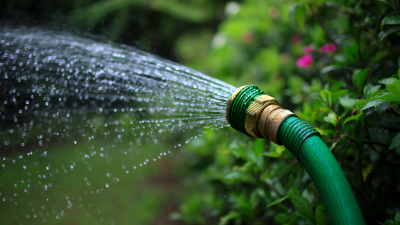
Understanding the Advantages of Fire Hose Garden Hose Combinations for Efficient Watering Techniques
-
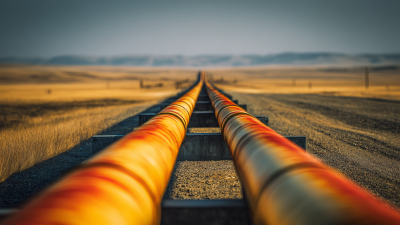
Understanding the Essential Role of Gas Tubing in Modern Energy Solutions
-

Understanding the Latest Innovations in Marine Hose Technology: Boosting Efficiency and Safety in Marine Operations
-
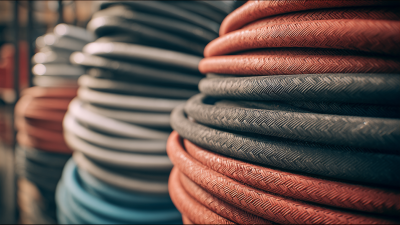
The Ultimate Guide to Choosing the Right Flexible Gas Hose for Your Needs
-
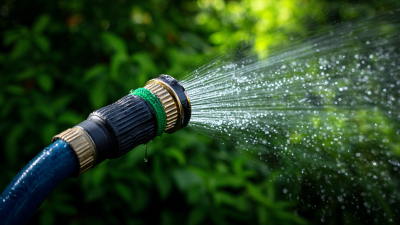
Exploring the Evolution of Garden Hoses: Innovations Driving Water Efficiency in 2023
-
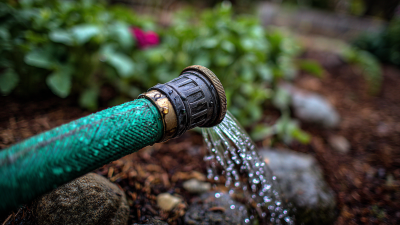
Transform Your Gardening Experience: The Ultimate Guide to Choosing a Quality Garden Hose
